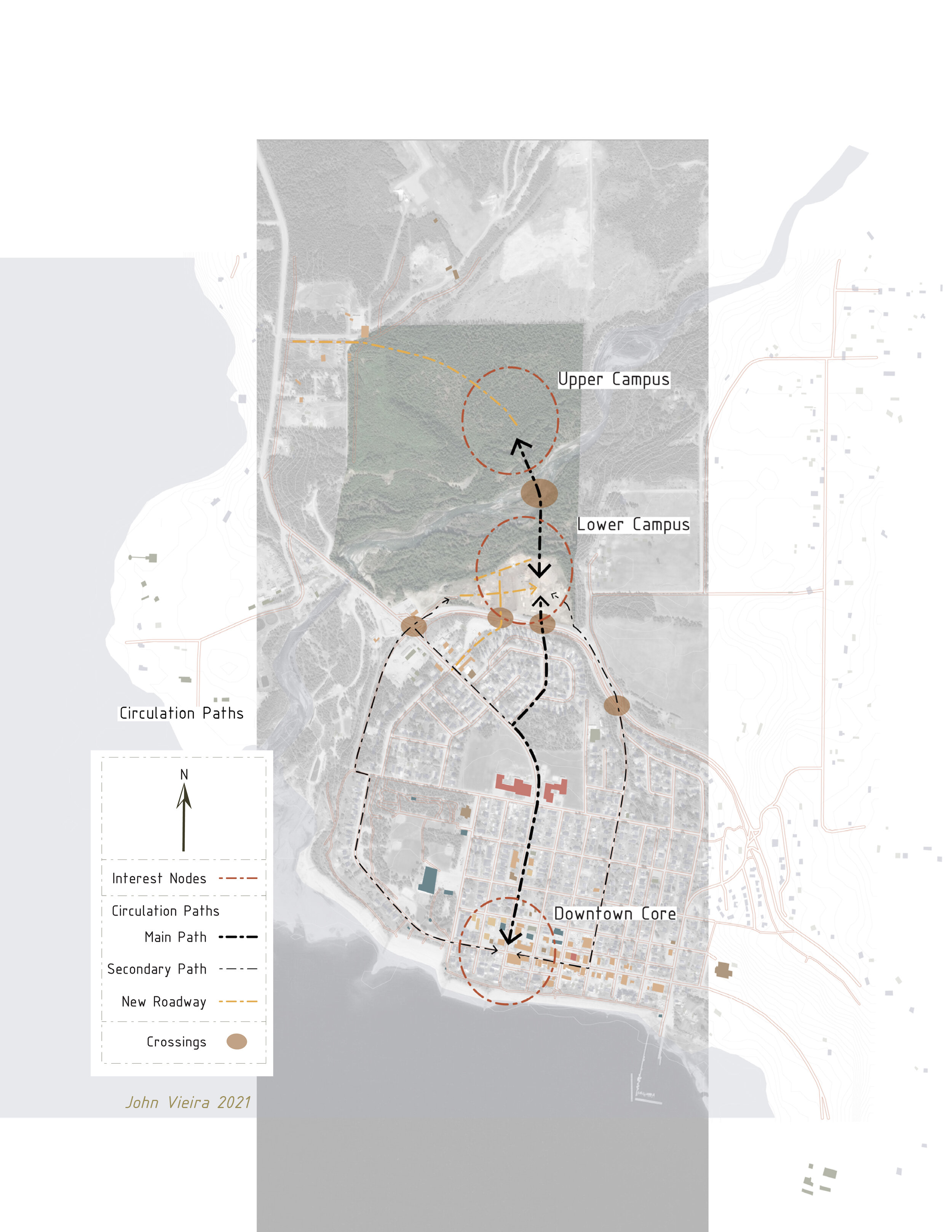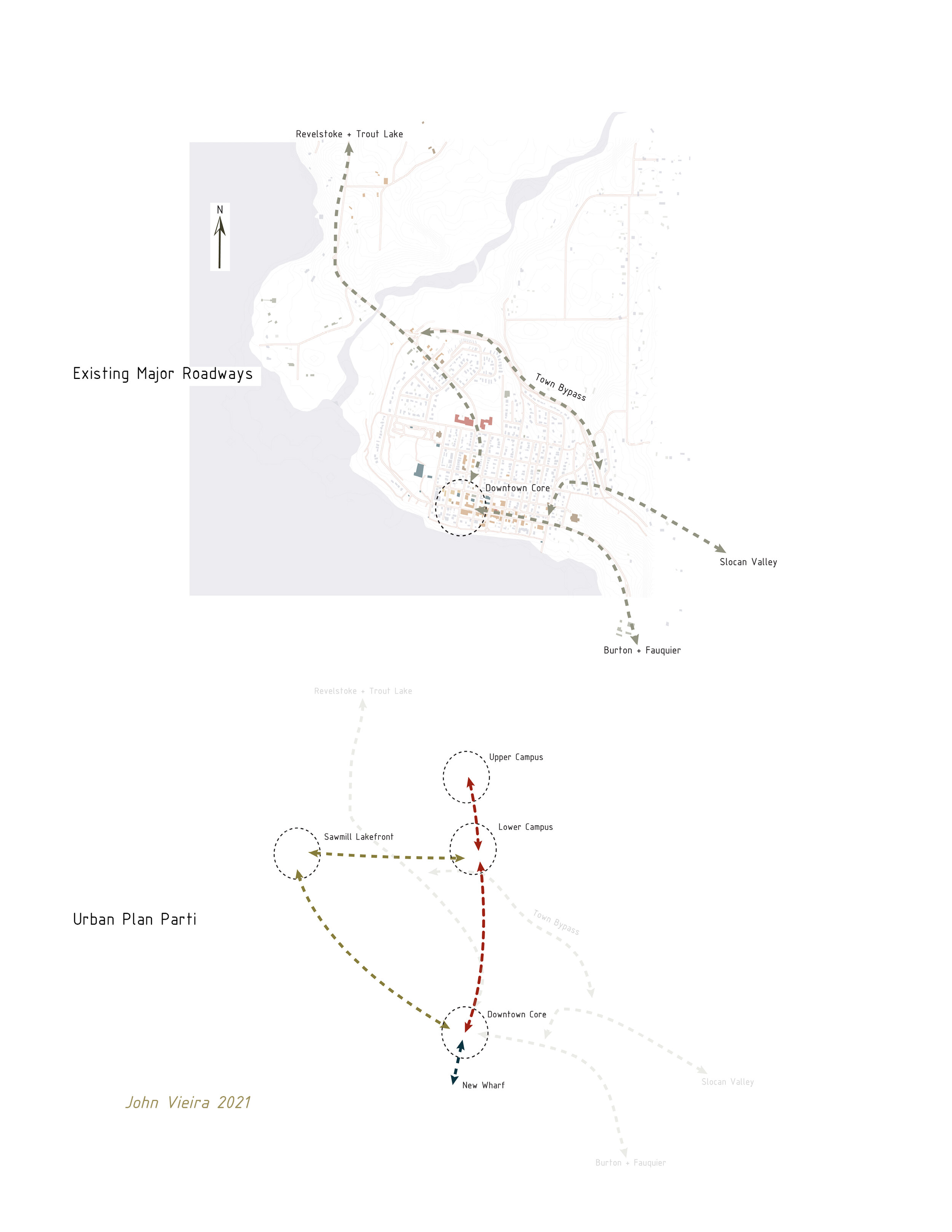How forestry became an architecture thesis topic
John Vieira came to architecture with a degree in forestry. Now in his final year of the Master of Architecture program, he is drawing on his knowledge of that industry to write his thesis.
Vieira, who turns 26 this month, grew up in Langley, BC. During high school, he enjoyed working summers with his uncle, a professional forester, on Vancouver Island and in Prince George in northern BC.
They went into the forest, did inventory, and laid out areas that were going to be harvested. “I got to run around in the woods,” he recalls. “It's pretty fun work. That got me in the realm of forestry.”
In 2013, he entered the Bachelor of Science in Wood Products Processing program at the University of British Columbia. It takes five years to complete, including a year of co-op studies.
John Vieira graduated in 2018 from the University of British Columbia with a Bachelor of Science in Wood Products Processing.
From forestry to architecture
In 2016, Vieira travelled to Japan for an internship with a Japanese forestry company. There, he met an architect and shared with him a design he had made for a cabin. “I had this idea at the back of my mind that I would build a tiny house if I worked in sawmills up north,” he explains.
It was a pivotal moment. “The architect was pretty supportive. It was good validation.”
By then, Vieira was having second thoughts about forestry.
He had served as a quality control technician in a sawmill one summer. “I remember grabbing boards off big chain conveyors and marking off the dimensions with calipers. I thought that's a good summer job, but a whole career based on that would be a bit repetitive.”
From that point, he decided to pursue architecture. “Maybe the job prospects were going to be a bit more fun with architecture.”
Through internet searching, he discovered that several universities in Canada offer a three-year Master of Architecture degree program for students whose undergraduate degree is in another field.
He was accepted to Carleton University's Azrieli School of Architecture & Urbanism and started in September 2018.
What is an architecture thesis?
Vieira is now in his third and final year when master's students work on their thesis. A thesis is an independent design research project on a topic selected and developed by the student. Toward the end of the previous academic year, students identify a topic they want to explore and are matched with an advisor.
“We encourage students to approach this with intensity, with curiosity, focusing on something they're invested in,” says Associate Professor Ozayr Saloojee, past Associate Director of Graduate Programs at Carleton's architecture school.
“It is an opportunity for deep study, and that's a really exciting thing to do.”
Associate Professor Ozayr Saloojee
“It’s a way to demonstrate independence, a rigorous curiosity that merges investigation, intuition, and critical and conceptual making,” says Saloojee.
“Part of it is to synthesize the experiences students have had during their time in the program and bring together a number of aspects of their learning. It enables them to have authorship on a project, and be able to conceptualize their work and the ways that they work.”
Choosing an architecture thesis topic
The working title of Vieira's thesis is Building Resiliency into a Resource-Based Community. It looks to recast and stabilize the economy of Nakusp, a community in the interior of British Columbia. Forestry has formed the primary economic base for the village since the 1950s and the area’s hot springs have long attracted tourists.
Images: Courtesy John Vieira
He is interested in exploring how communities that exist to serve resource exploitation can transition to a broader economy.
“My topic is a personal one,” he says. “I lived in a few of those communities. One of them lost a sawmill, and everyone dispersed and were at loose ends. A number of communities crashed at the will of a company making a profit. The company town is a strange phenomenon. I wanted to look into it more.”
Vieira is exploring how the role of design at different scales, including town and building scale, can lead to economic diversification and resilience to get away from economic cycles of dependence.
“The development of these communities revolves around a relationship between localized resource extraction and non-localized, market capital flows,” he writes in his thesis abstract. “Given the dynamic and unpredictable nature of the marketplace, the ability of a small community to grow and prosper is largely determined by external factors.”
Vieira’s comprehensive masterplan for future growth includes an educational institution focusing on forestry and hospitality, a resort-style hotel run by the college, and a new residential district on formerly industrial lakefront land. It also includes a reboot of the forestry industry in the form of a CLT and mass timber fabrication facility.
Helping communities through design and subject matter expertise
“John visited and interacted with numerous towns like Nakusp during his time in the forestry industry,” notes Associate Professor Benjamin Gianni, his thesis advisor.
“His thesis work is enabling him to revisit familiar turf with a different perspective and a new set of skills – exploring the role that architecture and urban design can play in the transformation of resource-based communities,” says Gianni.
“Building on his ‘inside’ knowledge, John is poised to present the town of Nakusp with an informed roadmap for its future, a vision around which to rally,” he adds. “This includes not only recommendations about which activities to attract, but where to locate them, what they look like, how to connect them together, and how to do so in such a way as to enhance Nakusp’s historic downtown.”
Three-year MArch students “well positioned”
Saloojee observes that architectural students’ thesis projects encompass a wide variety of topics, scales, and approaches. “There are material investigations, urban-scale projects, projects that are conceptual and speculative, and others more pragmatic and grounded. Some are narrative-based, some are landscape-scaled. There is an enormous variety of work produced in the thesis.”
Students in the three-year Master of Architecture program are well-positioned to produce strong and interesting projects, he adds.
“Because they come with wonderfully broad backgrounds and encounters, they bring unique dimensions of thinking and experience to their thesis work,” he says. “They might be coming from humanities, fine art, geography, or social sciences. That breadth of expertise and exploration of other disciplines and traditions can make for very rich contexts for their thesis work.”








